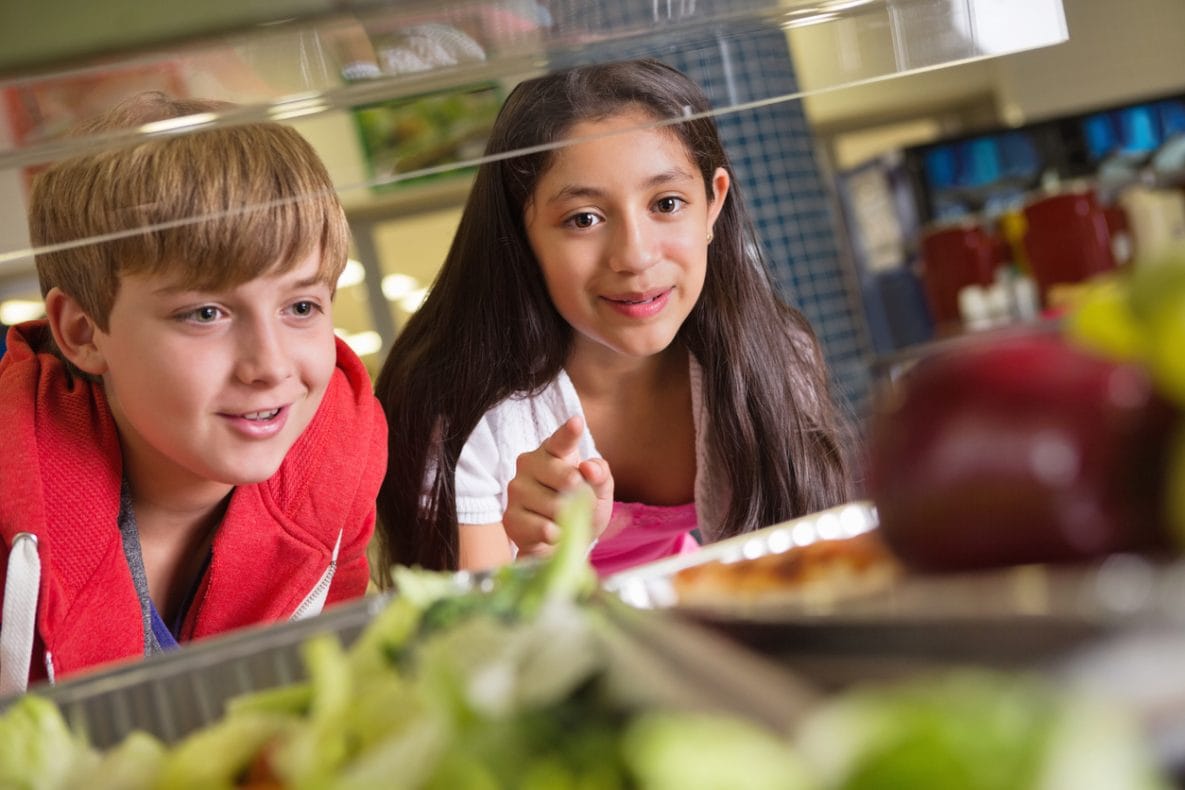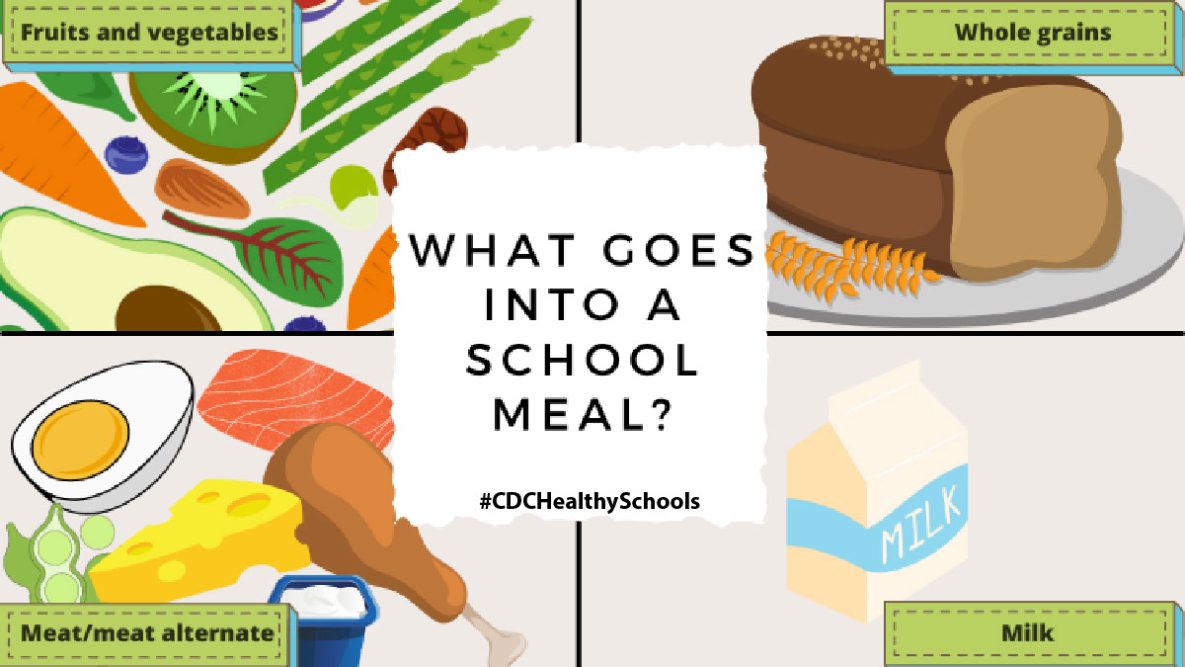Encourage healthy eating in school and at home

Many students have access to nutritious food through school meals programs. Encourage your child to try these healthy meals and eat healthy at home.
Parents, you may wonder what’s included in federal school breakfasts and lunches. The meals served through these programs must meet specific nutrition requirements and include fruits, vegetables, whole grains, lean proteins, and milk. Research shows that students who participate in school meal programs eat more of these healthy foods during mealtimes and have a better overall diet than students who don’t.1,2 All students can participate in school meal programs, and some students are eligible for free or reduced-price meals.
Although these foods are healthy, some children may hesitate to try them because they aren’t used to them or they resist certain foods, like vegetables. Sound familiar? To help reduce wasted food, you can take steps to encourage your child to eat healthier in school so they can get the proper nutrition for their growing bodies. How?
Model healthy eating at home.
You can support healthy behaviors, both in and out of school. Try some of these tips to make it happen:
- Review school menus with your kids and encourage them to try new food items. Use this as a chance to talk to your children about what’s being offered, and the nutrients in different foods.
- Get your kids involved in meal planning at home and let them pick a new vegetable or fruit to try. This is a great way to have older children research different options for using a fruit or vegetable in a meal.
- Got a green thumb? Plant a garden at home, or volunteer to help with a community or school garden.

Get involved in school health activities.
- Consider some of these ideas to help create a healthier school:
-
- Join the school or district wellness committee.
- Eat school breakfast or lunch with your child.
- Offer to help with taste tests or other nutrition promotion activities in the school cafeteria.
- Talk with the school cafeteria manager about foods you would like to see served. If your child has special nutritional needs because of allergies, sensitivities, or medical restrictions, talk to your school’s cafeteria manager about meal modifications for your child.
More information
- Child Nutrition Facts
- Child Nutrition Programs
- Eating Healthier at School
- Healthy School Meals Ideas for Parents
- School Nutrition
- USDA: Discover My Plate
- USDA: Stronger with School Meals
References
- Fox MK, Gearan E, Cabili C, et al. School Nutrition and Meal Cost Study, Final Report Volume 4: Student Participation, Satisfaction, Plate Waste, and Dietary Intakes.S. Department of Agriculture, Food and Nutrition Service, Office of Policy Support; 2019. https://www.fns.usda.gov/school-nutrition-and-meal-cost-study
- Kinderknecht K, Harris C, Jones-Smith J. Association of the Healthy, Hunger-Free Kids Act with Dietary Quality Among Children in the US National School Lunch Program. JAMA. 2020;324(4):359-368.
